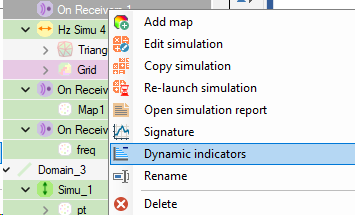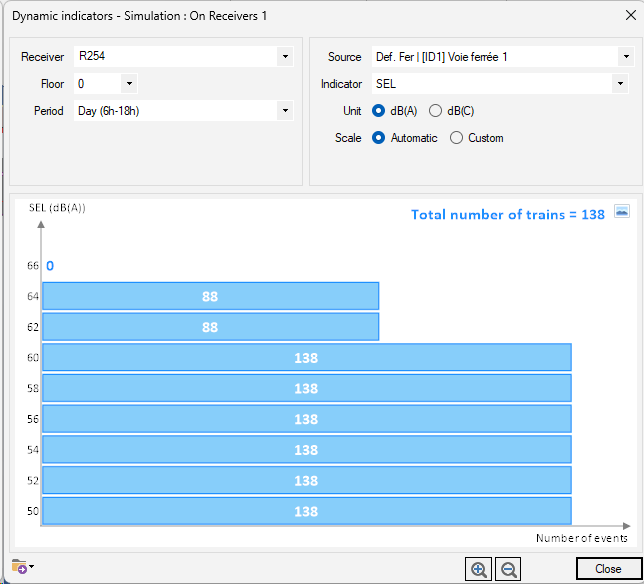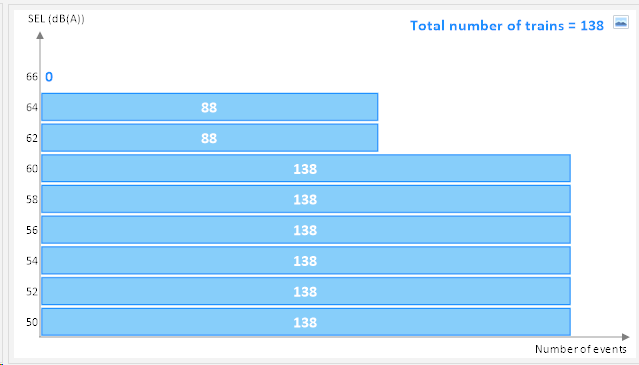|
<< Click to display Table of content >> Dynamic indicators |
  
|
|
<< Click to display Table of content >> Dynamic indicators |
  
|
From a Receiver type calculation with a Signature storage mode (railway), MithraSIG allows you to calculate dynamic indicators for railway noise sources (see the calculation settings).
These dynamic indicators correspond to the number of train passages causing a limit value to be exceeded for event indicators.
Once the calculation is complete, a dynamic indicator window is available when you right-click on the calculation:

Dynamic indicator interface

This window is presented in two parts:
•The selection of the railway track consulted with the indicator to display
•Displaying a chart exposing the NAX indicator corresponding to the selected indicator
Selection of the railway track consulted with the indicator to display

The selection of the indicator consulted is done by configuring the following fields:
•Receiver : The receiver allows you to indicate the position in X, Y and Z where you want to determine the event indicators.
•Floor : In the case of a receiver on the facade, the floor allows you to indicate the height at which you wish to determine the event indicators. If the receiver is not a front receiver, this floor field does not appear.
•Period : The time of day to study.
•Source : Railway track to be studied. The name is formatted as follows: "[Nature] | [Railway description]"
•Indicator : Name of the indicator on which to calculate the number of exceedance events. The following indicators are available:
oSEL (Single Event Level): A-weighted equivalent noise level normalized over 1 second. This indicator makes it possible to compare noises of different durations.
oLmax,S : Maximum value of the sound pressure level, determined using time weighting S (slow)
oLeqTp : Continuous sound pressure level over a passage time.
•Unit : dB(A) to apply A weighting, dB(C) to apply C weighting.
•Scale : Automatic or custom. In automatic mode, the scale starts at 50 dB and increases in increments of 2 dB up to the maximum value.
NAX Indicator Chart

The result displayed is a diagram explaining for each sound level (on the ordinate) the number of passages causing this level to be exceeded.
To know if a passage causes an overrun, the selected indicator is used.
For example, by selecting the SEL indicator, the diagram will display a set of NAX_SEL indicators, with X corresponding to a level in dB.
NA50_SEL therefore corresponds to the number of passages causing a SEL value greater than 50 dB.
NA20_SEL corresponds to the number of passes causing a SEL value greater than 52 dB.
And so on.
Please note, passages causing the 52 dB value to be exceeded also cause the 50 dB value to be exceeded.
The total number of trains is displayed for clarity. If 10 trains are traveling on the track, there cannot be more than 10 passages causing an overtaking.